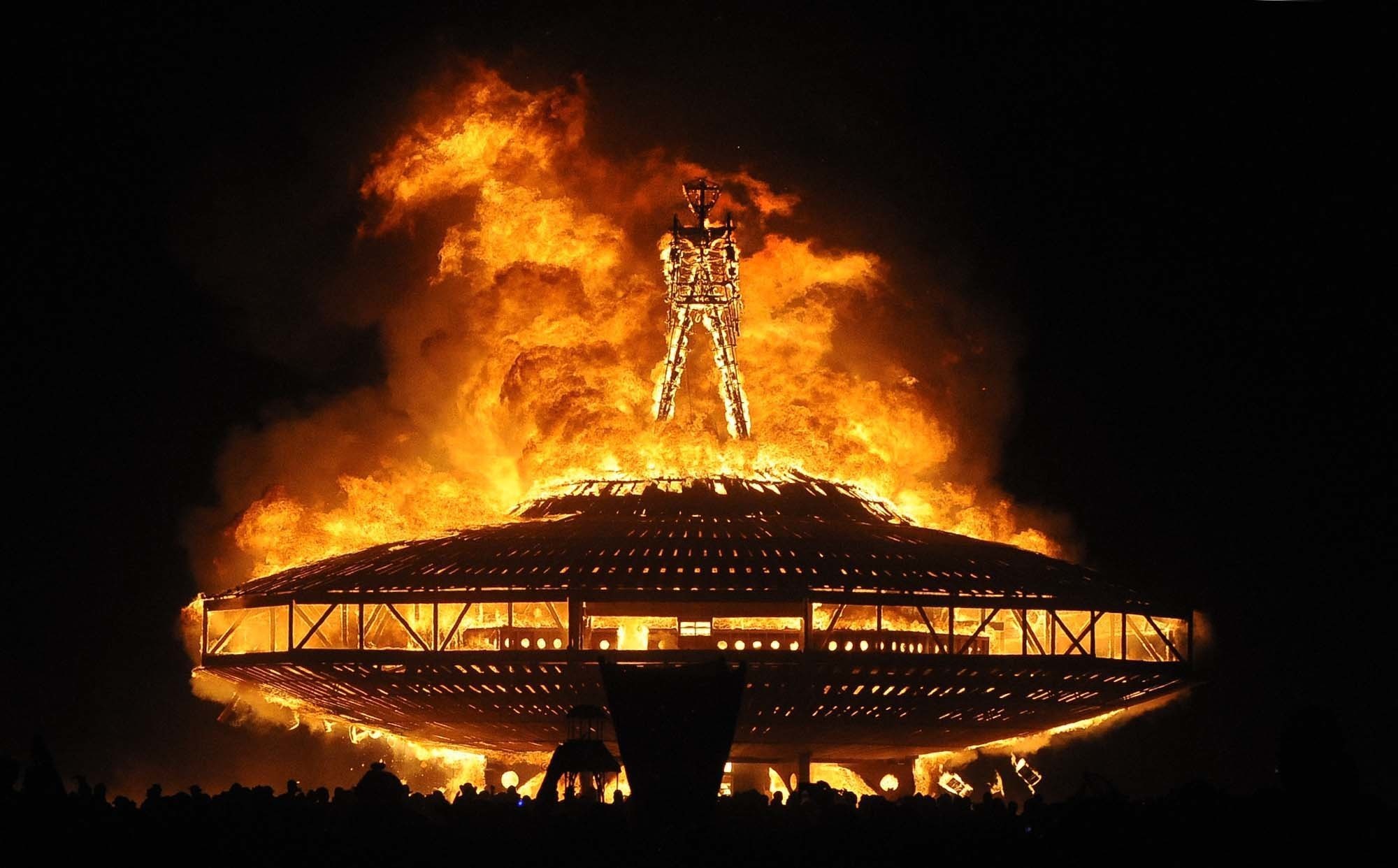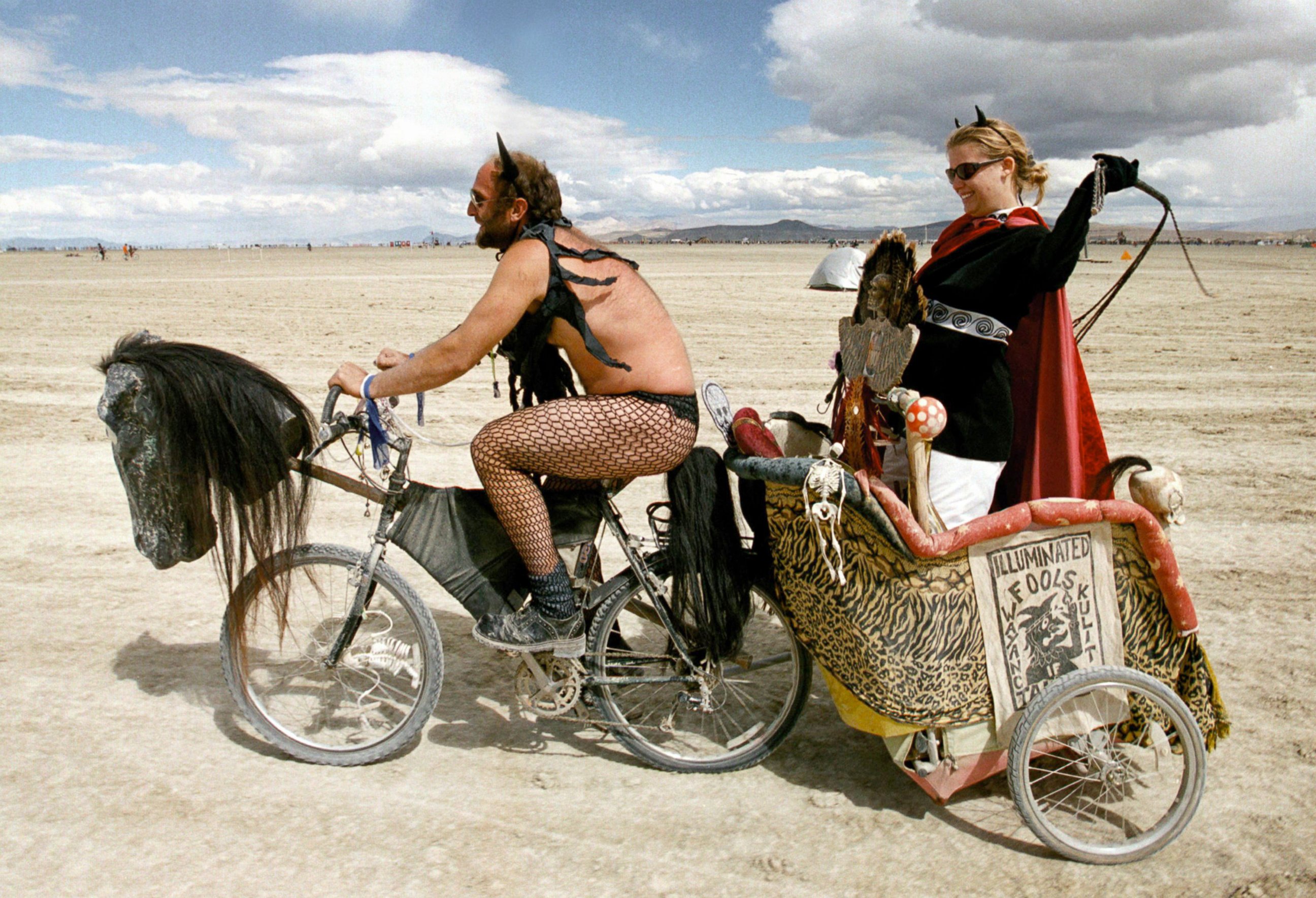Burning Man: 30 Years in the Making
70,000 will gather in Black Rock Desert Sunday for Burning Man's 30th year.
— -- It was the summer solstice of 1986, and two friends on a beach in San Francisco decided to burn a man made of sticks. The wooden effigy stood at about 8-feet tall. About 35 people showed up to see what was going on.
“Well it began spontaneously, as a playful impulse,” Larry Harvey, one of those two friends, explained.
The event that started from that spontaneous moment, known as Burning Man, now turns 30.
This Sunday, an astonishing 70,000 music lovers will flock to Black Rock Desert, Nevada, for the latest incarnation of the festival. Burning Man’s cultural significance is such that it has its own verb (to go is to “Burn”), noun (to be a loyal attendee is to be a “Burner”), and the festival has even inspired an airline (Burner Air).
The Beginnings
After the impromptu burning on Baker Beach 30 years ago, the gathering dedicated to the wooden effigies became a ritual.
The following year, the size of the structure increased by 50 percent, and the crowd size more than doubled.
By 1989, 300 gathered on Baker Beach to set a 40-foot man ablaze.

The Growth
An intervention by park police at the 1989 proceedings served as a turning point for the festival, which relocated in the summer of 1990.
The new site, two hours north of Reno, Nevada, in the Black Rock Desert, demanded that attendees make a pilgrimage, intensifying the sense of passion and commitment among them.
“It was our first time here, but it felt right,” writes Louis M. Brill, who discovered the festival that summer, on the event’s website. “We were a small enclave of tents and inhabitants — a desert community in the middle of nowhere. Today a colony and soon, an international community of like-minded friends — all drawn by this towering effigy — a gateway to a primal ecstasy of communion, celebration and consummation.”

The temporary community began to take shape. A flyer for the 1991 three-day gathering over Labor Day Weekend advertises, in addition to “1400 miles of nothingness,” a variety of artistic and social events.
At the 1997 Burning Man, Harvey told ABC News, “We make the hive, they bring the honey.”
“We create just enough order so that this spontaneous naturally occurring process called culture, which is born of the interactions of people that no one can plan, and that no one can control, would begin to happen," he said.
Burning Man Today
Burning Man has evolved significantly over the decades. Think: alternative arts festival meets experimental community meets Coachella.
The seven-day festival spanning from the last weekend in August to Labor Day is organized by the non-profit organization Burning Man Project.
Though it still operates according to its 10 main principles, which include inclusion, self-reliance, self-expression, the importance of gifting (ice and coffee are the only things for sale), and an emphasis on participation rather than observance, Burning Man has also become more mainstream.
EDM artists such as Skrillex and Diplo have performed, celebrities such as Katy Perry and Will Smith have attended, and Silicon Valley giants such as Jeff Bezos have become regulars.
Tickets for this year’s festival started at $390. The Burning Man statue has climbed to heights as tall as 105-feet, though it’s still unknown how high this year’s structure will be.
For some, it’s a bucket list item, for others it’s a spiritually defining week. Regardless, the consensus seems to be that it must be experienced to be understood. Summed up by P. Diddy’s 2013 tweet, “Words cannot explain! I'll never be the same."




